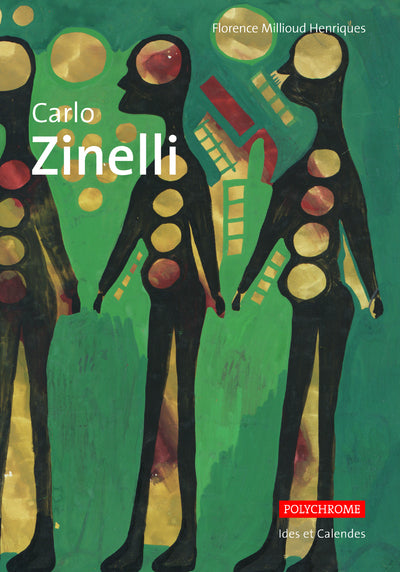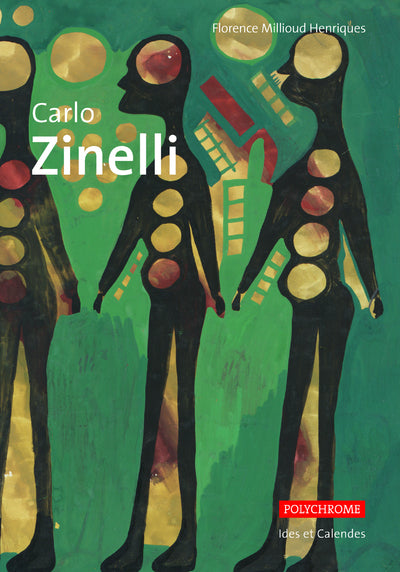Carlo Zinelli
- Authors: De (auteur) Florence Millioud-Henriques
- Publishers: IDEAS CALENDAS
- Date of Publication: 2019-09-19
- Pages: 127
- Dimensions: 201mm x 141mm
If there are numerous texts dedicated to Carlo, in exhibition catalogues
in particular, if it figures prominently in works devoted to art brut,
few publications have been specifically devoted to it. This is the
first study in French to be exclusively devoted to him.
An important figure in outsider art, Carlo Zinelli – known as Carlo – was born in 1916 in
San Giovanni Lupatoto in Italy. He is the sixth child of a family of seven.
At the age of 2, he lost his mother. Very early on, Carlo developed a passion for music.
In Verona he works at the municipal slaughterhouse.
The war. First enlisted as an Alpine hunter, he left for Spain
take part in the civil war. He returned two months later, already wounded.
Two years of convalescence followed, after which he was discharged. Wounded
in his being and in his failing relationship with others, Carlo Zinelli has
exfiltrated from one world to invest another, to create it tirelessly and
perhaps redefine it. From 1941 to 1947 successive crises of anxiety and
aggression in fact periodically leads him to psychiatric hospitals. He is
finally interned for paranoid schizophrenia. For a long time he did not
will only make graffiti, on the ground, on the walls. It was only from 1957
that Carlo will be able to give free rein to his creativity: he can finally express himself
thanks to a free expression workshop that opened in the hospital. In its
gouache or pencil drawings, in this daily epic that only the
death will be interrupted after twenty-seven years of internment (he will die in 1974 in
Chievo Hospital in Verona), his two schizophrenic worlds meet,
fertilize and soothe each other. The procession of men, women,
of more or less exotic animals is infinite. Beings pass by, shadows without
face, bodies mutilated, perforated, crucified, buried. If they all bear the
stigmata of impossible oblivion, the smell of terror, of suffering, even
of death, is no longer there. Washed. Neutralized.
Exhibitions of works produced in the studio are organized in Italy and
abroad. It was then that Jean Dubuffet saw those of Carlo and acquired some
many of which he integrated into his Compagnie de l'Art Brut (today
Collection of raw art, in Lausanne). The artist will leave around 2000 works.
If there are numerous texts dedicated to Carlo, in exhibition catalogues
in particular, if it figures prominently in works devoted to art brut,
few publications have been specifically devoted to it. This is the
first study in French to be exclusively devoted to him.
Share

